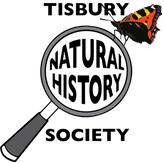|
July is the best time of year to see butterflies in the UK as, given warm, sunny conditions, so many species may be on the wing. One great spot in the village is the Community Field behind the Nadder Centre. The herb-rich, unimproved grassland is ideal for the family of butterflies known as browns. Rather confusingly, this includes the Marbled White, as well as the Meadow Brown, Ringlet, all of which can be found here in profusion. Another two browns, the Speckled Wood and Small Heath, may also be seen. The varied flowers supply ample sources of nectar and there is no shortage of the grasses, on which the brown butterflies lay their eggs and their caterpillars feed. The Meadow Browns and Ringlets flutter around in and amongst the grass and flower stems, and can be tricky to separate until they rest and you can get a good look at them. In contrast, stronger flyers, such as Red Admirals, Peacocks and Painted Ladies shoot around above the plants dipping down when they need to nectar or think they see a mate.
In the right conditions, you don’t have to go far to see butterflies. If you have a garden with butterfly-friendly flowers, it’s possible you might see as many as a dozen of the commoner species. If you are unsure how to identify them, then there is a helpful chart available from Butterfly Conservation, the wildlife charity that does what it says on the tin. The chart shows 17 of the commoner butterflies and 3 common or striking day-flying moths which might be mistaken for butterflies. It is provided as part of the Big Butterfly Count (www.bigbutterflycount.butterfly-conservation.org), which takes place for a fortnight from 15th July and is open to anyone with an interest in wildlife. All it involves is picking a spot and spending 15 minutes counting the butterflies and moths you can see. Most people do this in their garden, but you can select another sunny location if you wish. You can do as many counts as you like and even if you don’t see any butterflies, you need to report it as this too is important data. There is also a free app that you can download on which to submit your results and it has more help with identification and distribution maps. The data you collect is used by butterfly specialists to learn more about butterfly populations and habits and to assess where conservation efforts are most important. Last year, more than 150,000 records were submitted, making it the world’s biggest butterfly survey. Why not join this growing band of “citizen scientists” to help the conservation of these wonderful insects? by Andrew Graham Comments are closed.
|
Photo: Avocets (Izzy Fry)
The headers display photos taken by our members. Do get in touch via the Contact Form if you'd like to submit a photo for selection.
Archives
May 2024
Categories
All
|

 RSS Feed
RSS Feed